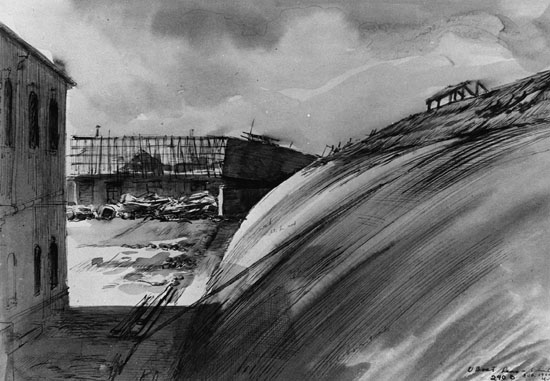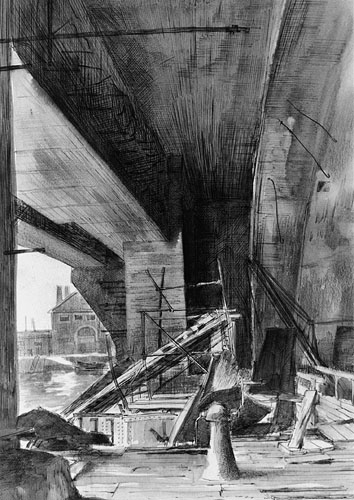The Invasion of Normandy: Cherbourg Part II
The invasion of Normandy in June 1944 was the culmination of three years of planning and preparation gathering by Allied forces in Britain. Landing in the face of determined German resistance, units of the British Commonwealth and U.S. armies established a beachhead, defeated German counter-attacks, and eventually broke out into a fast-moving campaign in France. By September 1944, Allied forces had liberated most of France and were poised to cross the Rhine river into Germany itself. In conjunction with Allied forces in northern Italy, and Soviet armies moving into Poland and the Balkans, the total defeat of Nazi Germany was in sight.
Instrumental to Allied success was the American, British, and Allied naval and amphibious contingents at Normandy. In the year before D-Day, U.S. and Commonwealth forces trained and prepared for amphibious operations out of ports in southern England. In the weeks leading up to the invasion, minesweepers cleared the channel of mines while escorts and patrol aircraft attacked any German submarines that tried to operate in the English Channel. Battleships, cruisers and destroyers provided crucial bombardment of enemy fortifications both on the Normandy shore and, with the aid of Navy spotter teams, further inland. During the actual invasion, navy-manned landing craft shuttled troops ashore in the face of fierce enemy resistance. Once there, Navy beach battalions served under fire to facilitate the orderly flow of men, vehicles, and supplies from cargo and amphibious ships offshore. Navy field hospitals also provided aid to the wounded and transported them to ships for the voyage to hospitals in England.
{default}Through all phases of the operation Navy combat artists Dwight Shepler, Mitchell Jamieson and Alexander Russo observed and recorded different aspects of this vast and complicated campaign. Though it was also filmed and photographed, the artwork they created helps convey a sense of the feelings and emotions behind the events.
The Invasion of Normandy: Cherbourg
One of the Allied objectives after landing in Normandy was the capture of the port city of Cherbourg, with its facilities that could be used for landing reinforcements and materiel. Cherbourg was also a target because it was a great base for Nazi U-boats, protected from Allied bombing and gunnery by massive concrete "pens." Although war’s destruction was evident, the Allies captured Cherbourg with its port relatively intact.

Outside View U-Boat Pens – Cherbourg
Mitchell Jamieson #240b
Ink & wash, August, 1944
88-193-IV
The rear of a reinforced concrete U-boat pen at Cherbourg. These pens protected German U-boats from air attack when they were in port. The rounded top of the pen was camouflaged to make it look like just another arsenal building when viewed from the air. In the background, work was in progress at the time the arsenal was captured.

Entrance to U-Boat Pen, Cherbourg
Mitchell Jamieson #240a
Charcoal, ink & wash, August, 1944
88-193-IU
This shows the massive entrance to a U-boat pen at Cherbourg with the gate demolished by the Germans, who evidently did not try to demolish the walls themselves – 18 feet thick in some places. The pens were so constructed that additional thicknesses of concrete could be added without altering the basic structure.


0 Comments
Trackbacks/Pingbacks